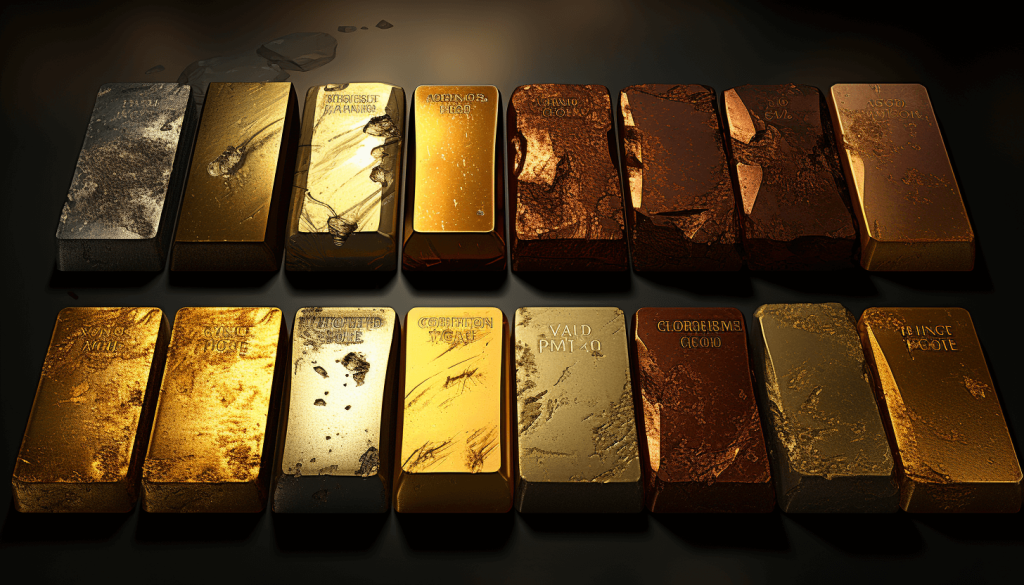| Gold Colors | |
|---|---|
| 1. Yellow Gold | 2. White Gold |
| 3. Rose Gold | 4. Green Gold |
| 5. Black Gold | 6. Blue Gold |
| 7. Purple Gold | 8. Gray Gold |
| Gold Karats | |
| 9. 24k Gold | 10. 18k Gold |
| 11. 14k Gold | 12. 10k Gold |
When referring to types of gold, it is necessary to mention that gold does not refer exclusively to the glittering yellow metal and what we commonly associate to jewelry or wealth. In fact categorizations include different types of gold as to purity but it even extends to color and where the gold may be mined. In terms of appearance, this variety of types of gold can impact pricing as well as the appearance and ability of the gold.
Colors of Gold
Yellow Gold
Yellow Gold Yellow gold is the most commonly used and known through history as a kind of this precious metal. Its inherent beauty, shine, and malleability make it a favorite material to work by different civilizations in their ancient crafting mastery. Up to this date, it is still a popular choice in traditional and timeless jewelry pieces. Based on the karat weight, yellow gold can be available in different price ranges where 24k is always the most expensive because of its high percentage content of gold. This type of gold is widely popular in all types of jewelry, ranging from engagement rings to necklaces and bracelets due to its hypoallergenic nature. It is also the most accessible form of gold in its color owing to the meaningful availability of yellow gold across cultures and geographies.
White Gold When it was introduced to the world in the 1920s, as a cost-effective alternative for the highly priced platinum, quickly shot up the popularity ladder. Typically being plated with rhodium, a robust and shiny metal, it gains more hardness, increased brightness and some protection to increase its durability. The price of the white gold is usually equivalent to the yellow gold, though sometimes it adds to a small percentage due to additional rhodium plating. Its shiny luster and neutral hue make it an excellent backdrop for diamonds and other gemstones so that it is most commonly found in the design of engagement rings and wedding bands. While most likely a latecomer, white gold is now available throughout the jewelry industry.
Rose Gold
Rose gold With its origin dating back to 19th-century Russia, rose gold was originally referred to as “Russian gold” for its having a wonderful pinkish hue. It is distinguished by high copper content in the alloy which bears a distinct color red. Indeed redder results are realized with higher volume of copper. The price matches yellow gold although it can be slightly cheaper due to the higher amount of copper making it more affordable. Its vintage appeal and romantic connotation of rose gold made this material become popular in different styles of jewelry that have ranged from the engagement rings to fashionable bracelets and watches. Though not as well-liked as yellow or white gold, rose gold is rather largely accepted in society, particularly for vogue vintage styles and fashionable contemporary-day settings.
Green Gold
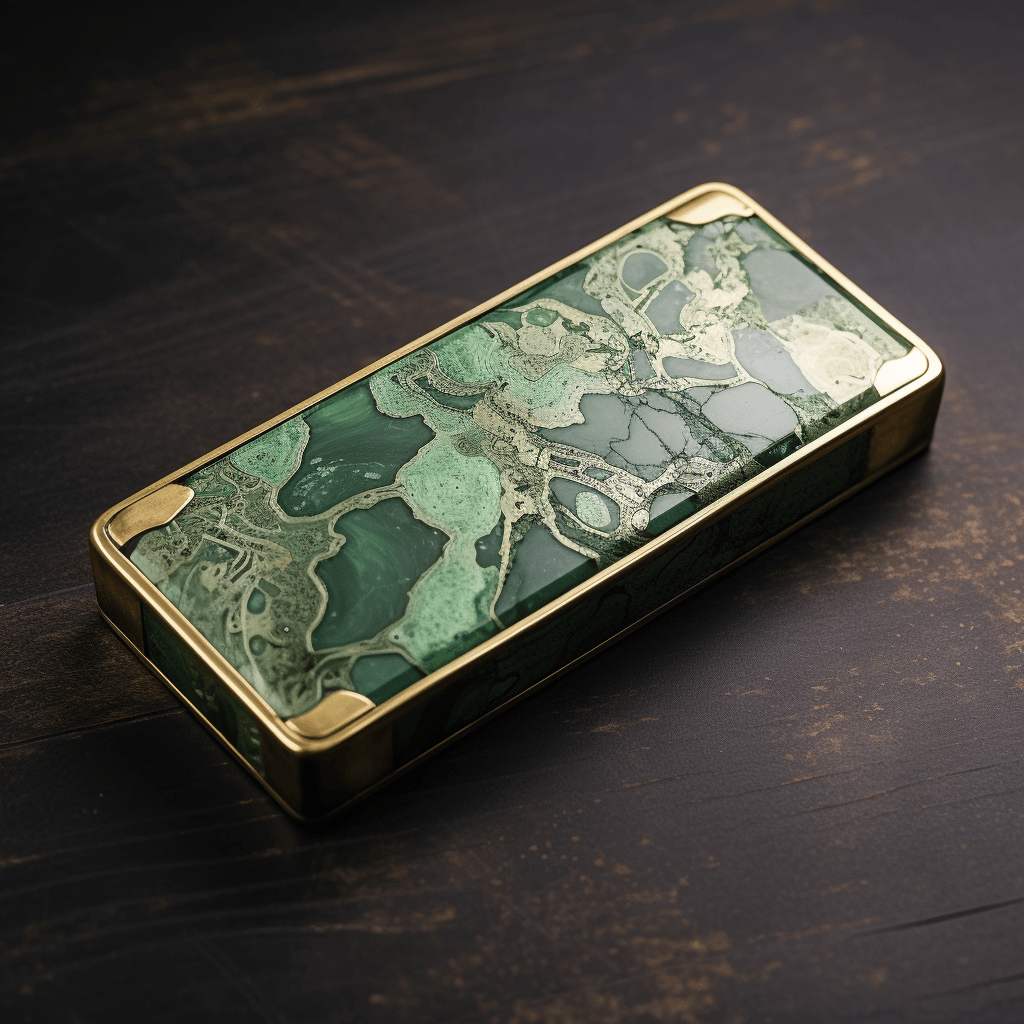
Green gold It has a historical significance with usage dated back to ancient Egypt and Greece being known as Electrum. Normally the alloy of silver and gold has a slight greenish tinge, which is enhanced with other metals such as copper and cadmium in its commercial version. The price of green gold is usually in par with the yellow gold but at times, it can even take a premium when some alloyed metals are and also how unique this piece is. Not as widely used yellow, white or rose gold, it found a niche in the artisan and specialized jewellery niches where its colour can really take center stage.
Black Gold
Black Gold – Black gold is actually something of a modern innovation, mainly used in avant-garde jewellery. In making it, usually either a layer of black rhodium or ruthenium electroplating or darkening the gold surface by controlled oxidation process is done. The special processes and the stunning final result often make black gold more expensive compared to traditional gold colors. This is a bolder and modern version of gold, not as much in use but growing popular with time especially among the more daring who have begun to accept this unique style to make jewelry to stand out.
Blue Gold
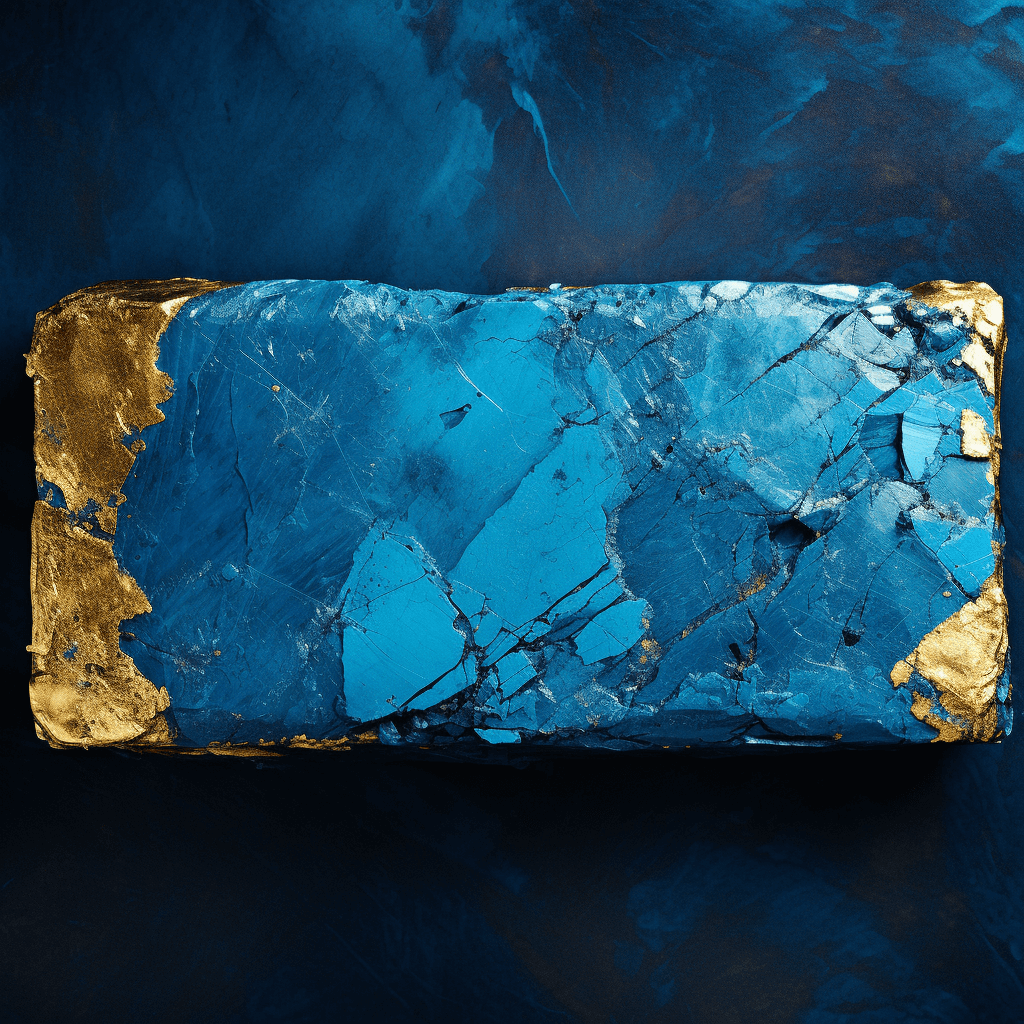
Blue Gold Blue gold is a truly very unique and less conventional form of the precious metal. It’s produced by alloying gold with either gallium or indium, both of which can oxidize and result in a bluish tint. In a historical context, blue gold didn’t get similar wide scale usage as more common gold colors, mainly due to scarcity of the gallium and indium metals and also complexity in process of their alloying. Thus, blue gold gets only more expensive and less commonly found than with standard jewelry collections. Though, often its distinct color can make it a top desired choice in unusual or custom jewelry for those who wish to stand out from the crowd with their adornments of choice.
Purple Gold
Purple Gold Also known as amethyst gold, it is one of the rarest forms of gold, mainly owing to its composition and the complex nature associated with working upon this. Purple gold, a gold-aluminum alloy is usually rich in gold content but is notably brittle making it difficult to be moulded into traditional jewelry. As such, common forms of its usage are within unique watch components or specialized jewelry pieces. With its unique color and the complexity of crafting it into usable forms, purple gold usually carries a higher price tag compared to more common gold colors.
Gray Gold
Gray Gold Gray gold is an interesting and delicate color variation of gold when either it’s alloyed with a little portion of palladium or iron added to it. Though indeed having some contemporary and unique appeal, gray gold is far rarer in regular jewelry owing to the cost of palladium and the alternative appeal of white gold. Its usage is usually seen either in specialized or custom pieces, providing the muted few but not totally bright color palette for modern designs. Price wise, gray gold is usually comparable to white gold and only occasionally brings a premium when one pays for the presence of palladium in its alloy.
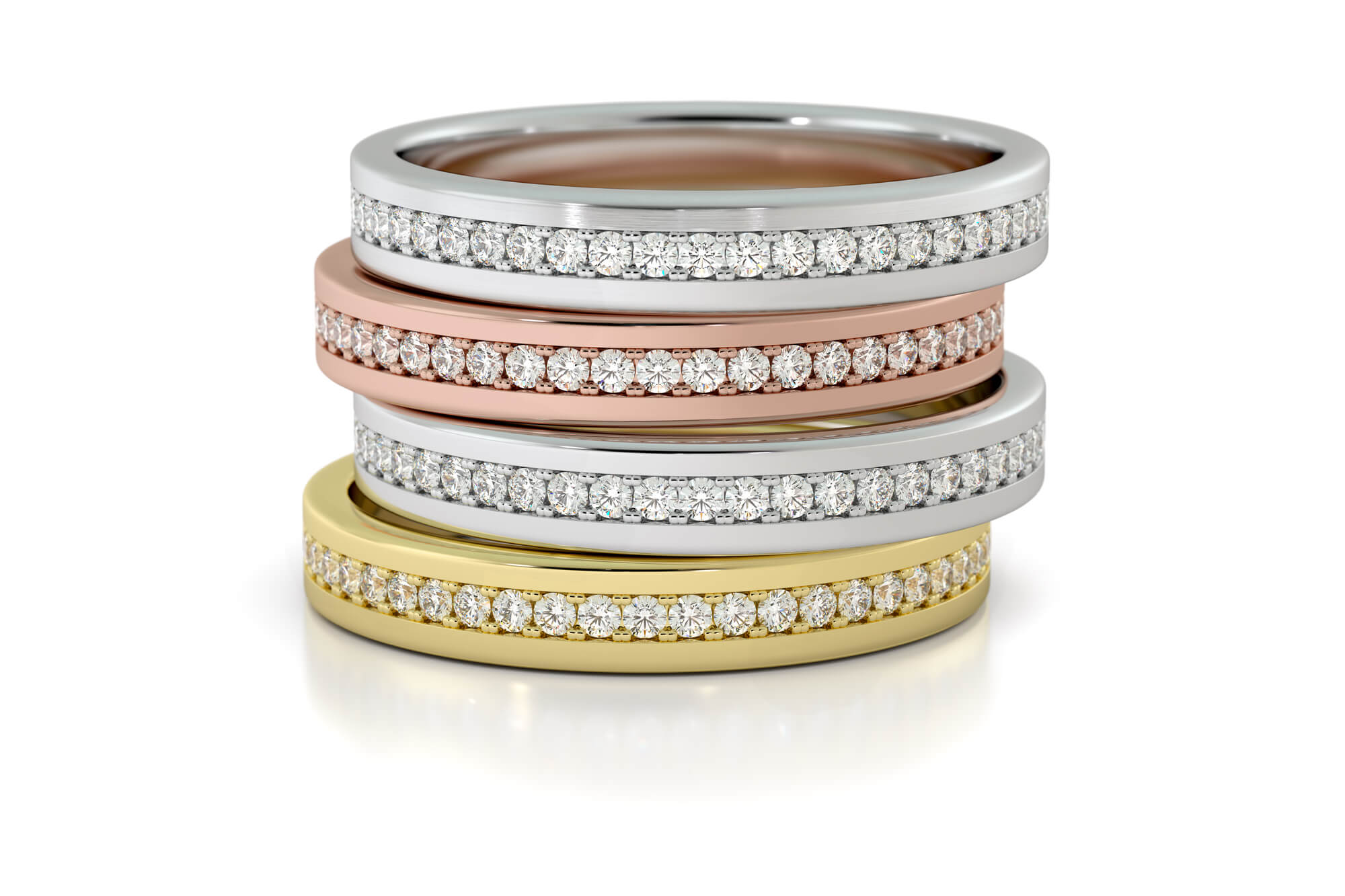
Each color of gold, with its unique blend of metals and distinct hue, offers a unique appeal and charm. This wide range of colors makes gold one of the most flexible materials in terms of jewelry and, more than not just other material in the world, it may easily cater to the preferences and styles of almost every person. Whether you’re drawn to the traditional allure of yellow gold, the modern shimmer of white and gray grams, or the eccentric appeal of precious metals like green, blue, or purple, there’s a kind of gold that will be perfect for you.

| Gold Color | Frequency | Composition Material |
|---|---|---|
| Yellow Gold | Common | Gold, Copper, Silver |
| White Gold | Common | Gold, Palladium/Manganese/Nickel, Rhodium plating |
| Rose Gold | Fairly Common | Gold, Copper |
| Green Gold | Less Comon | Gold, Silver (additional Copper and Cadmium in commercial versions) |
| Black Gold | Less Common | Gold, Black Rhodium/Ruthenium or other blackening agents |
| Blue Gold | Rare | Gold, Gallium or Indium |
| Purple Gold | Very Rare | Gold, Aluminium |
| Gray Gold | Less Common | Gold, Palladium or Iron |
Gold Karats – What Types of Gold Exist?
Broadly, the unit of measurement that expresses gold’s purity defines numerous kinds of gold. Before anyone can understand the worth and excellence of this valued metal, they need to know what a karat means. To better understand this concept, especially where it differs from the “carat” system used for gemstones and pearls, see this informative post on What is a Carat.
24k Gold
- Purity: 24k gold is 100% pure gold. It doesn’t contain any additional metals.
- History: The history of 24k gold has been rooted in time immemorial. The Egyptians and Greeks many centuries ago admired the purity of 24k gold for its divine quality. From the very inception of using 24k gold, it represents value, status, power, luxury, and wealth.
- Usage: Being due to the softness it does not find much usage in regular wear jewelry. However, finds more application for conversion into gold bars, coins, or ceremonial artifacts.
- Price: Being the purest form of gold, 24k commands the highest price per gram.
- Popularity: It is not that common in Western jewelry but enjoys some popularity in some parts of Asia and Middle East where traditionally the high purity gold is favored.
- Purity: 22k gold is nothing but 22 parts of gold and other 2 parts of metals like copper or silver making it 91.67% pure.
- History: In history, 22k gold has been used since a long time from ancient and even medieval times. Its applications of coinage and various ornaments decorations had bee came into existence or practice.
- Usage: In today’s world 22k gold is seen extensively on high class jewellery and ornaments much more in some countries like India or Saudi Arabia where gold is frequently bought as investment or status.
- Price: The price for 22k gold per gram is a little lesser in comparison with the 24k but nevertheless comparably high because of its substantial content of gold within it.
- Popularity: 22k gold is not much popular in Western countries; yet, it is rather famous with the Middle East and South Asia remaining its stronghold.
18k Gold
- Purity: 18k gold has 18 parts of gold against other metals that are approximately copper, silver or nickel in 6 parts and hence it is 75% pure.
- History: 18k gold, that is known to be associated with luxury and class, began to gain popularity around the 14th century in different corners of the world.
- Using: Today, 18k gold is used for just about any type of high-end jewelry imaginable, including engagement rings, necklaces, bracelets, and watches. Balancing durability with a higher ration of precious metal makes ideal pieces that will be meant to be permanent fixtures in any collection.
- Price: 18k gold is cheaper in terms of the gram price compared to 24k and 22k due to the number of content of gold present but still expensive due to high demandiness and high limits of the gold content.
- Popularity: The kind of gold is globally popular due to the aspect that it holds an equilibrium between durability, affordable, as well as holding high content of gold.
14k Gold
- Purity: The purity of the 14k gold is at 58.3% since it is 14 parts gold and 10 parts other metals – normally in a mixture copper, silver, and zinc.
- History: The 20th century saw the increasing popularity of 14k gold, particularly in Western countries, primarily due to its affordability and inherent property of steady depreciation.
- Usage: 14k gold is used in a wide range of jewelry, including rings, earrings, necklaces, bracelets, and pendants. It is an all-around type that symbolizes the perfect compromise between durability and cost.
- Price: 14k gold is priced less in comparison to prices of 18k and other higher karats, which remains as a choice for large numbers of customers.
- Popularity: The 10k gold is one of the most popular used types of gold for jewelry in the United States and many other Western countries.
10k Gold
- Purity: 10k has 10 parts of gold to 14 parts of other metals such as copper, silver, nickel, or zinc making approximately 41.7 % in purity content.
- History: The use of 10k gold began to trend in the 20th century as a cheap alternative in comparison with that of soft gold jewelries.
- Usage: It is usually used in cheap forms of jewelry that include rings, bracelets or even pendants.
- Price: Because it is the least pure form of gold that the United States recognizes as gold, 10k gold costs significantly less than higher-karat gold.
- Popularity: Although it is commoner for jewelry at a lower price range, it still falls behind 14k and 18k in popularity for fine jewelry because of its low gold content.
Understanding the karats of gold and their characteristics can assist in making a selection of gold for jewelry or for investments. The designation between the different types depends on factors like preferences, affordability, durability of the product versus value of the gold.
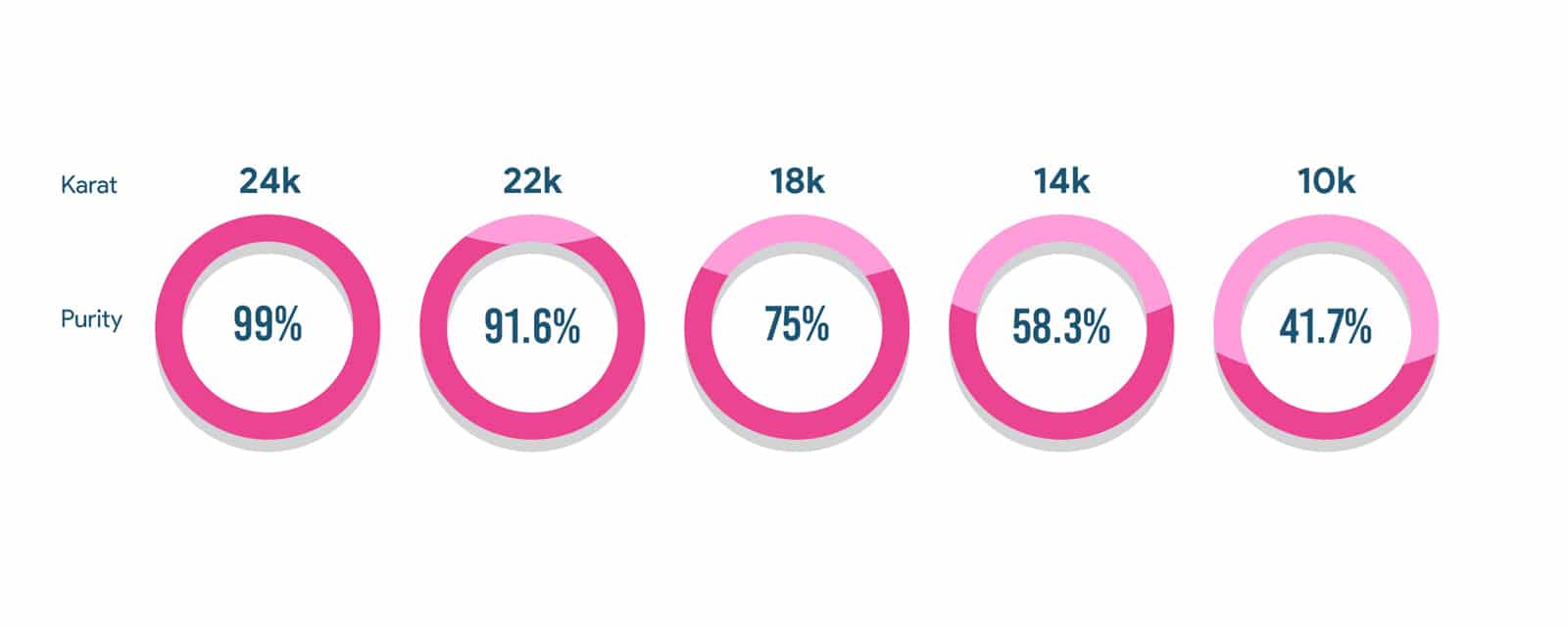
| Karat | Purity | Pros | Cons | Price (Relative) | Popularity |
|---|---|---|---|---|---|
| 24k | 100% | Purest form, highest in value | Soft, not ideal for daily wear | Highest | Less common |
| 22k | 91.67% | High gold content, durable | Softer than lower karats | High | Less common |
| 18k | 75% | Good balance of purity & durability, high quality and ideal for fine jewelry | More expensive than lower karats | Medium-High | Very popular |
| 14k | 58.3% | Very durable, affordable | Lower gold content | Medium | Most popular |
| 10k | 41.7% | Most durable, most affordable | Lowest gold content, less bright | Low | Common |
Tarnish Resistance of Different Types of Gold
A common question while considering the different types of gold is, “Does gold tarnish?” To this question, the answer would be no; gold doesn’t get tarnished. However, other metals that form the different alloys by combining them with gold might in turn oxidize to actualize a discoloration or tarnish.
Therefore it could be said that gold resistance to tarnishing is largely dependent often to its purity. Higher karat gold, such as 24k, 22k, and 18k, is more resistant to tarnishing due to the higher gold content. The use of gold with lower karat values, for example 14k and 10k, contain larger proportions of other metals increasing tarnish especially under exposure to certain chemicals or atmospheric conditions.
For more insight on when and why gold could tarnish, here is the article: Does Gold Tarnish.
The words “of the highest quality” could sound a little bit vague when it comes to gold. If we talk about the most pure form of gold, the highest quality would be 24k. Meaning it is pure 100% but also the softest it means this isn’t so appropriate for everyday jewelry since it would scratch and bend easily.
Otherwise, if we mean by “highest quality” the best for practical applications in things like jewelry, then 14k and 18k gold can be seen as highest quality. These kinds of gold offer a balance between the content of gold, durability and price. These are 14k and 18k gold, which contain a higher percentage of gold than 10k but are more durable compared to 24k gold.
Which Type of Gold is the Most Affordable?
For most countries, including the United States, 14k gold is the most frequent kind of gold for jewelry. It keeps a good balance between durability and affordability, having an increased proportion of gold than in the case of 12k or 10k gold, thus being very popular among those who want to buy rings, bracelets, or necklaces.
What are Rare Types of Gold?
With respect to rare minor types of gold, one might plausibly conceive of rare gold as the material from certain mines or regions. For example, the gold that is mined during the Gold Rush in California or the gold that comes out of the Witwatersrand Basin also in South Africa might be considered rare because it was pulled out of its location at a different time.
Black gold and blue gold are exceedingly rare as far as their karats and colors are concerned. Black gold is usually formed through the means of electroplating or mixing gold to some metals that appear in black color. Blue gold is just an alloy compounded from gold and indium or gallium, which relatively appears in small quantities.
Which Color Of Gold Is More Expensive?
The color of gold doesn’t usually determine its price but purity does and in essence the weight of the gold. Though slight differences can be noticed depending on the alloying materials. For example, palladium (used for making white gold) and platinum (used for rhodium plating white gold) are more expensive than copper or silver (used in yellow or rose gold), thus sometimes resulting in the higher price of white gold comparing other types of gold.
However, in most of the cases, regardless of its color, the most expensive gold is that which has 100% content by weight and this is considered to be 24k gold. Its high price is due to both the fact that its content is 100% yet above all due to the premium value added through refining it to such a purity.

